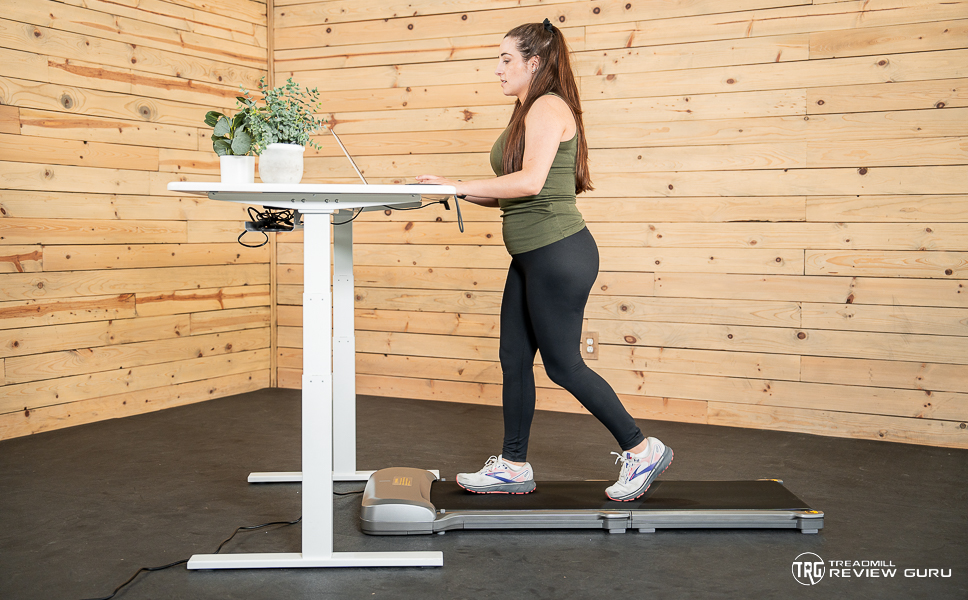Walking Pad for Marathons: Efficient, Space-Saving, Convenient
Few sporting achievements demand as much determination, discipline, and strategic planning as preparing for a marathon. Yet, leaving success to the mercy of unpredictable weather or stretching your patience with endless, repetitive routes is not the only way forward. Indoor training with a reliable walking pad or treadmill allows any runner, regardless of experience, to progress securely and systematically towards marathon day. More runners each year, inspired by the convenience and performance data of running indoors, are lacing up without even needing to glance outdoors.
Why stick to a walking pad for marathon prep? The answer lies in its controlled impact on the body, flexible scheduling, and the reassurance of a consistent environment. For those living in busy cities, areas with extreme climates, or juggling family life, indoor training turns what can feel like a daunting task into an achievable goal.
What is a Walking Pad? A walking pad is a compact, portable treadmill designed for walking or light jogging, making it an ideal solution for those with limited space or a busy lifestyle. Unlike traditional treadmills, walking pads are often foldable and lightweight, allowing for easy storage under a bed or desk. This versatility means you can integrate movement into your daily routine—whether you’re working from home, watching TV, or squeezing in a session before breakfast.
Marathon Preparation: The Building Blocks Before pounding the belt, it’s wise to contemplate what marathon training actually demands. The backbone of any successful programme consists of setting priorities: defining a realistic finish time, tailoring training intensity, and methodically increasing weekly mileage. Rome wasn't built in a day, and neither is marathon stamina. A gradual approach dodges injury and allows your mind and body to adapt to heavier workloads.
It’s tempting to target an ambitious time, but realistic milestones build confidence and keep motivation high. The physiological demands are simple on paper but less forgiving in practice: cardiovascular endurance, muscular stamina, mental resilience, and efficient recovery. The road to 26.2 miles is a steady climb.
The Hidden Benefits of Treadmill and Walking Pad Training Running on a treadmill or walking pad is not merely a compromise for rainy days. There are meaningful advantages:
- Steady Pace: Monitor and polish your target marathon speed from the first session onward.
- Low-Impact Surface: Softer than pavement, reducing the grind on hips, knees, and ankles.
- No Weather Worries: Rain, hail, sleet or dark evenings become irrelevant.
- Programmable Inclines: Simulate any course profile, whether you’re targeting the London Marathon’s bridges or even steeper terrain.
- Distraction-Free Runs: Fewer variables mean a sharper focus on posture, gait, and breathing.
Training indoors also allows for efficient core stability routines, such as planks or leg raises, immediately after a run when muscle engagement is highest. Stronger abdominals and glutes mean improved posture, less fatigue over distance, and fewer niggling injuries.
Setting Up Your Indoor Training Plan Consistency rules when it comes to marathon training. Here’s a framework for building up from novice runner to confident competitor. The schedule adapts to different lifestyles, making it sustainable for months of preparation.
Weeks 1–4: Laying the Foundation
- Frequency: Run 3-4 days per week.
- Session breakdown: 2 short runs (20–30 mins each), 1 long run starting at 5–8 km
- Incline: Set at 1% to simulate mild outdoor resistance
- Pace: Gentle ‘conversational’ speed—no gasping allowed
- Goal: Train your body to handle time on your feet, not speed or distance.
Weeks 5–8: Mileage Growth
- Long runs: Increase gradually, adding 1–2 km per week until you reach 12–15 km.
- Incline sessions: Experiment with short bursts at 3–5% incline for 2-3 minutes, then recover flat.
- Intensity: Maintain easy pace, adding sessions of hill walking if you feel up to it.
- Goal: Develop capillary networks in your muscles and expand your aerobic base.
Weeks 9–12: Introducing Quality and Variety
- Speedwork: Add one weekly tempo or interval session (see below for details).
- Second long run: If schedule allows, include a medium-long run at a steady pace.
- Tracking: Use heart rate and pace data for smart, progressive overload.
- Goal: Expand your comfort zone, push the threshold, and tune up specificity.
Sample Weekly Training Schedule Here’s what a representative marathon week on a walking pad might resemble:
| Day | Workout Type | Duration/Pace |
|---|---|---|
| Mon | Recovery Run | 30 min, easy pace |
| Tue | Speed Intervals | 6 x 800 m @ 5K pace |
| Wed | Easy Jog | 40 min, relaxed |
| Thu | Tempo Run | 30 min, marathon pace |
| Fri | Rest/Cross-Training | Yoga, cycling, or functional strength |
| Sat | Long Run | 90–120 mins, 60–90s slower than marathon pace |
| Sun | Optional Recovery | 20–30 mins walk or gentle jog |
Making Every Kilometer Count: Best Treadmill and Walking Pad Workouts Let’s break down some specific indoor sessions proven to boost performance:
- Long Run: Train your mind to handle monotony. Mentally divide the effort into chunks (e.g., “just three more 30-minute sessions”).
- Tempo Run: Warm up, hold goal pace for 20–40 minutes, then cool down. You’re training your body to clear lactic acid and push for longer.
- Interval Sprints: 6 x 800 m at 5K pace with short recoveries pushes your VO2 max and running economy.
- Hill Simulation: 8 x 1-minute hill repeats at 5–7% incline, easy descent between. Excellent for leg strength and tendon resilience.
- Progression Finish: Gradually increase pace over your last ten minutes. Discipline in negative splits pays off come race day.
Nourishment for Endurance Running hours each week requires fuel. A focus on carbohydrates, lean protein, and varied micronutrients forms the backbone of your training diet.
- Pre-run: Banana with a smear of nut butter, or toast with honey.
- Hydration: Sip regularly and consider a drink with electrolytes for long or sweaty sessions.
- Post-run: Prioritise a mix of carbs and protein (e.g., Greek yoghurt with granola; chicken sandwich; protein smoothie).
As the long runs grow, some runners opt to practice on-the-go fueling—gels or chews—so the gut is ready for marathon day.
Tackling the Toughest Parts: Motivation and Setbacks Progress is rarely linear. Fatigue, boredom, and even the occasional missed target are universal. To keep advancing:
- Mix up your workout playlist or queue podcasts/audiobooks.
- Set micro-goals: “Finish the next interval,” “keep form for the next km.”
- Display your progress: Chart your weekly mileage or tick off completed sessions.
- Connect with the community: Social apps and challenges can transform solo runs into lively competition.
Even setbacks are part of the process—treat every tough session as a lesson, not a defeat.
The Technology Edge: Training Apps PitPat and similar smart treadmill platforms have revolutionised how athletes approach indoor miles. Not only do they provide robust real-time data, but they inject excitement through virtual races, global leaderboards, and rewards systems.
Highlights of PitPat
- Virtual competitions pit you against both friends and strangers worldwide
- Dynamic performance tracking allows in-depth analysis of pace, heart rate, and form
- Gamification features keep sessions light-hearted and engaging
- Rewards system offers tangible incentives from points to merchandise
Whether training for a local 10K or the world-famous London Marathon, these features make treadmill and walking pad sessions both productive and genuinely fun.
Choosing the Right Walking Pad for the Job Selecting reliable equipment means balancing functionality, longevity, and ease of use. Look for:
- Adequate running belt width for comfort
- Sturdy shock absorption to minimise repetitive strain
- Smart integration for heart rate and pace data
- Portability and storage (folding models suit compact living spaces)
User experiences show that even compact walking pads deliver marathon-level sessions. Runners like Louis and Emily can vouch for the impact these devices make on motivation and mileage alike.
Bringing It All Together Whether you’re a beginner aiming for a first finish or an experienced runner refining your pace, preparing for a marathon using a walking pad makes intensive training accessible and manageable. Indoor training sidesteps weather uncertainty and busy schedules, allowing dedicated progress—no matter where you start.
With structured programming, smart devices, and nutritional awareness, there is no limit to how far you can push your boundaries. Every kilometre counts, every workout adds up, and the virtual community standing beside you means you’re never truly running alone. Plug in, press start, and embrace the process: marathon training from the comfort of home has never been more rewarding.

